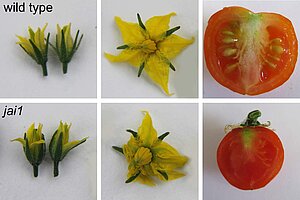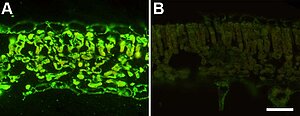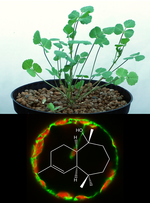Jasmonates in flower development of tomato (Solanum lycopersicum)
As known from mutants defective in JA perception, jasmonates are important for the proper development of reproductive organs. In contrast to the JA-insensitive mutant of Arabidopsis thaliana showing a male-sterile phenotype, the JA-insensitive tomato mutant Sljai1 is female sterile and does not develop seeds. It shows, however, additional alterations in the development of male flower organs: Sljai1 exhibits disturbed pollen development...
Read more...
Use of arbuscular mycorrhiza as additive to improve tomato quality in green house production
The overall goal of the project “MycoTom” is the development of a method to use the positive effects of plant's interaction with arbuscular mycorrhizal fungi in order to improve the quality of tomato fruits. We aim to develop a method for an efficient mycorrhization of commercially used tomato cultivars under greenhouse production conditions. In parallel, we want to develop a test system allowing tomato producers...
Cell- and tissue-specific detection of jasmonates
A gap in our knowledge on jasmonate-induced processes is the cellular localization of jasmonates. Most functions of jasmonates within distinct cells or tissues have been identified through indirect analyses using localization of JA biosynthetic enzymes and JA-induced proteins...
Early communication between plant roots
and soil-borne microorganisms
Plant roots interact with a variety of microorganisms. Metabolites that are released as root exudates or volatiles contribute to selecting the beneficial and repelling the detrimental microorgansims. To get insights into this response of plants to various microorganisms, we used Medicago truncatula as it is a natural host for root pathogens...
Read more...
Interplay of plastids and peroxisomes in jasmonate biosynthesis
Jasmonates are synthesized from α-linolenic acid released from plastid membranes. The first three steps of the JA biosynthesis leading to the intermediate cis-12-oxo-phytodienoic acid (OPDA) are located in plastids. The conversion of OPDA to JA, however, is located in peroxisomes. Since OPDA itself is a molecule with signaling potential...
Methods established within the working group:
Molecular biological methods including plant transformation (tobacco, tomato, Medicago truncatula), expression analysis by Real-Time RT-PCR, microarrays
Cytological methods (light and electron microscopy, confocal laser scanning microscopy, immunolabelling, in situ-hybridisation, microspectral photometry, FRET, FRET-FLIM, BiFC)
Analytical methods (jasmonate analytics in collaboration with research group "Glandular Trichomes and Isoprenoid Biosynthesis", G. Balcke)
This page was last modified on 27 Jan 2025 27 Jan 2025 27 Jan 2025 27 Jan 2025 27 Jan 2025 27 Jan 2025 27 Jan 2025 .




